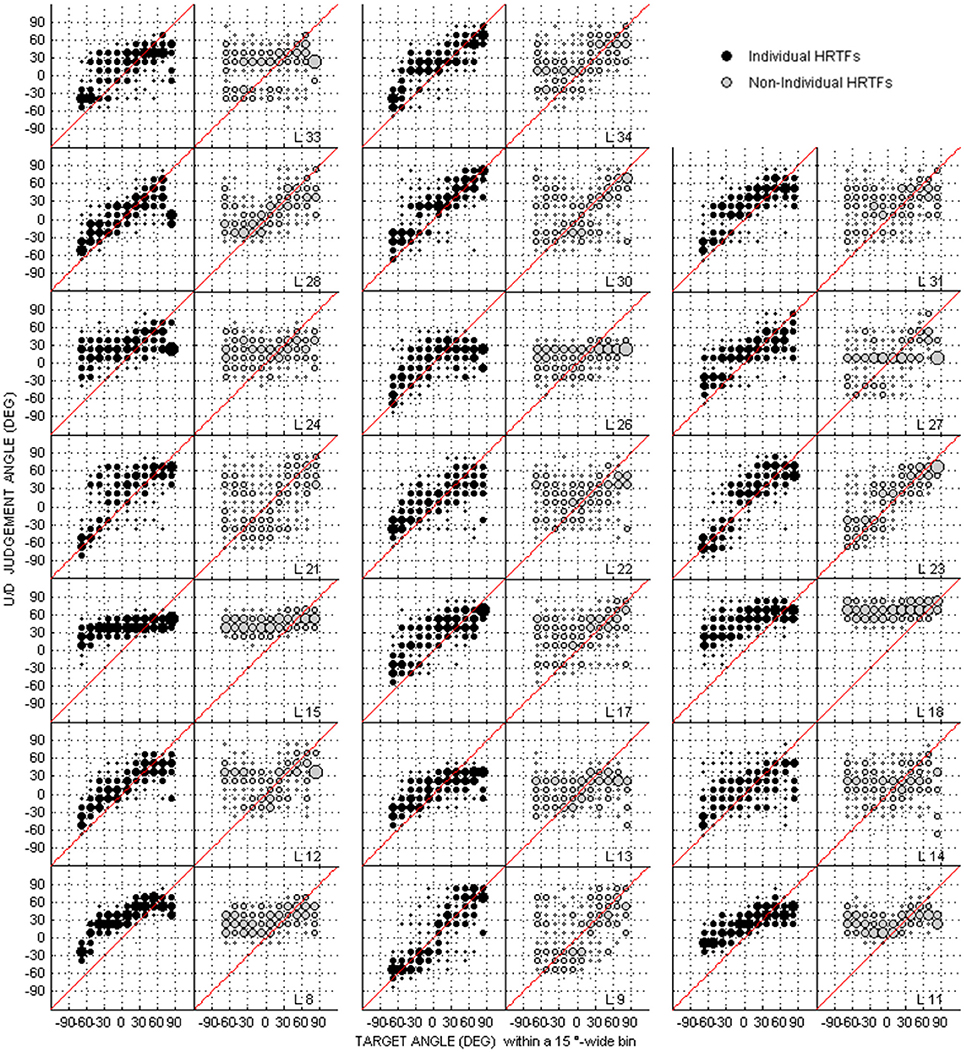
94% of researchers rate our articles as excellent or good
Learn more about the work of our research integrity team to safeguard the quality of each article we publish.
Find out more
CORRECTION article
Front. Neurosci., 08 August 2016
Sec. Auditory Cognitive Neuroscience
Volume 10 - 2016 | https://doi.org/10.3389/fnins.2016.00363
This article is part of the Research TopicHow and Why Does Spatial-Hearing Ability Differ among Listeners? What Is the Role of Learning and Multisensory Interactions?View all 24 articles
This article is a correction to:
Perceptual factors contribute more than acoustical factors to sound localization abilities with virtual sources
A corrigendum on
Perceptual factors contribute more than acoustical factors to sound localization abilities with virtual sources
by Andéol, G., Savel, S., and Guillaume, A. (2015). Front. Neurosci. 8:451. doi: 10.3389/fnins.2014.00451
Reason for Corrigendum:
Due to an oversight, there was a mistake in the Figure 2 as published. The black plots in the published Figure 2 were accidentally replaced with a duplicate of Figure 8. The correct version of Figure 2 appears below, this figure corresponds with the written data in the main article text.

Figure 2. Individual judgment position against target position with individual and non-individual HRTFs (black and gray dots, respectively) at the pre-test in the up/down dimension. Each panel couple is for a different listener (N = 20).
The authors apologize for the mistake.
This error does not change the scientific conclusions of the article in any way.
GA wrote the corrigendum. SS and AG viewed and approved this Corrigendum.
The authors declare that the research was conducted in the absence of any commercial or financial relationships that could be construed as a potential conflict of interest.
Keywords: sound localization, perceptual learning, procedural learning, head-related transfer function, individual differences
Citation: Andéol G, Savel S and Guillaume AI (2016) Corrigendum: Perceptual factors contribute more than acoustical factors to sound localization abilities with virtual sources. Front. Neurosci. 10:363. doi: 10.3389/fnins.2016.00363
Received: 04 July 2016; Accepted: 22 July 2016;
Published: 08 August 2016.
Edited and reviewed by: Brian Simpson, Air Force Research Laboratory, USA
Copyright © 2016 Andéol, Savel and Guillaume. This is an open-access article distributed under the terms of the Creative Commons Attribution License (CC BY). The use, distribution or reproduction in other forums is permitted, provided the original author(s) or licensor are credited and that the original publication in this journal is cited, in accordance with accepted academic practice. No use, distribution or reproduction is permitted which does not comply with these terms.
*Correspondence: Guillaume Andéol, Z3VpbGxhdW1lLmFuZGVvbEBpcmJhLmZy
Disclaimer: All claims expressed in this article are solely those of the authors and do not necessarily represent those of their affiliated organizations, or those of the publisher, the editors and the reviewers. Any product that may be evaluated in this article or claim that may be made by its manufacturer is not guaranteed or endorsed by the publisher.
Research integrity at Frontiers

Learn more about the work of our research integrity team to safeguard the quality of each article we publish.